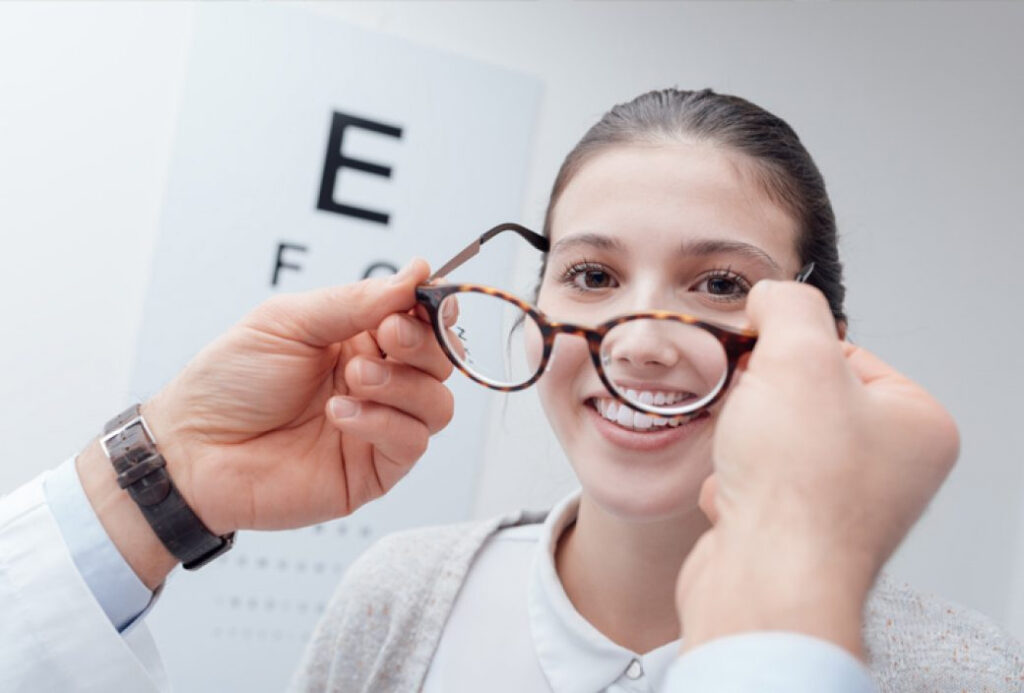
What is Myopia?
Myopia, commonly known as nearsightedness, is a refractive error of the eye where distant objects appear blurry while close objects can be seen clearly. This condition occurs when the eye’s shape causes light rays to bend (refract) incorrectly, focusing images in front of the retina instead of on it. Myopia is a widespread issue, affecting millions of people worldwide, and its prevalence continues to rise, especially among younger populations.
Symptoms of Myopia
The most noticeable symptom of myopia is difficulty seeing distant objects clearly. People with myopia may find it challenging to read road signs, watch television from across the room, or see a classroom whiteboard from the back. Other symptoms include:
- Frequent squinting
- Eye strain
- Headaches
- Difficulty seeing while driving, especially at night (night myopia)
If left uncorrected, myopia can affect daily activities and lead to further complications.
What Causes Myopia?
Myopia is caused by a combination of genetic and environmental factors. The primary causes include:
- Genetics:- If one or both parents have myopia, their children are at a higher risk of developing the condition.
- Eye Structure:-Myopia occurs when the eyeball is too long, or the cornea (the clear front cover of the eye) is too curved, preventing light from focusing directly on the retina.
- Environmental Factors:- Prolonged near work, such as reading, writing, or using computers and smartphones, can increase the risk of developing myopia, especially in children.
Risk Factors for Myopia
Several factors can increase the likelihood of developing myopia, including:
- Family History:- A strong family history of myopia significantly raises the risk.
- Prolonged Near Work:- Spending excessive time doing close-up work can strain the eyes and contribute to myopia.
- Lack of Outdoor Time:- Studies suggest that children who spend more time outdoors are less likely to develop myopia. Natural light and focusing on distant objects may help slow the progression of myopia.
Complications of Myopia
While myopia can usually be corrected with glasses, contact lenses, or refractive surgery, severe or progressive myopia can lead to more serious complications:
- Retinal Detachment:- The elongation of the eyeball in high myopia increases the risk of retinal detachment, a condition where the retina pulls away from its normal position.
- Glaucoma:- Myopia is a risk factor for glaucoma, a group of eye conditions that damage the optic nerve and can lead to vision loss.
- Cataracts:- People with myopia are at an increased risk of developing cataracts earlier in life.
Why Laser Surgery is Best for Myopia
Laser eye surgery, specifically LASIK (Laser-Assisted In Situ Keratomileusis), is widely regarded as one of the best treatments for myopia. LASIK works by reshaping the cornea to allow light entering the eye to focus properly on the retina. Here’s why it’s considered an excellent option:
- Precision:- Laser surgery offers a high degree of accuracy in correcting the refractive error.
- Quick Recovery:- Most patients experience significant vision improvement within a day or two after surgery, with minimal downtime.
- Long-lasting Results:- Laser surgery can provide a permanent solution to myopia, reducing or eliminating the need for glasses or contact lenses.
- Safety:- Modern laser technology has made the procedure safer, with a low risk of complications when performed by an experienced surgeon.
For those considering laser surgery, it’s essential to consult with a myopia specialist to determine the best treatment option based on individual needs and eye health.
Conclusion
Myopia, or nearsightedness, is a common vision problem that can significantly impact daily life. Understanding the causes, symptoms, and risks associated with myopia is crucial for early detection and management. While glasses and contact lenses offer effective correction, laser surgery, particularly LASIK, stands out as a preferred treatment for many, providing long-term relief and improved quality of life. If you’re experiencing symptoms of myopia or considering treatment options, consulting with a specialist is the first step towards clear, comfortable vision.


